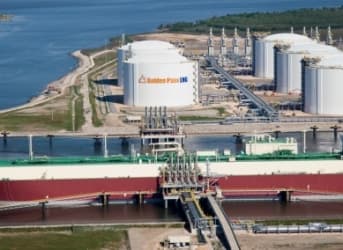Seven score and twelve years after Abraham Lincoln delivered the Gettysburg Address, and the crude complex is examining its own principles: those of supply and demand. Given the current lack of equality between the two, crude prices are heading lower once again, dipping below $40 for a second consecutive day.
U.S. and Canadian production provide a couple of great examples of the dynamics at play in the current crude market. Canadian oil-sands production has been holding up relatively well in the last year, mostly because investments are longer-term in nature and had already been made prior to the price drop. (And also in part due to a weaker Canadian Loonie helping to mitigate some of the losses on exported oil).
These companies are now, however, trying to slow output amid the ongoing lower oil price environment, while eighteen oil-sands projects have been shelved since the downturn. Meanwhile, although U.S. production is slowing at some shale plays, producers at basins such as the Permian continue to innovate, boosting efficiency gains to drive on lower costs.
The chart below illustrates the contrasting fortunes for Alberta versus Permian basin production. And just as 1000 DUCs (drilled but uncompleted wells) in the Bakken illustrate, U.S. shale production is able to be much more nimble should prices rise – exemplifying its new-found status of swing supplier. Related: UK Banking On NatGas And Nuclear Over Renewables

Taking a look at the latest economic releases, and Japan posted a trade surplus for the first time since March, as imports plunged the most since…erm, March. A deficit of 292 billion yen was projected, while a surplus of 112 billion was seen, as imports dropped by 13.4 percent; only an 8.6 percent decline was expected. Related: Will 2016 Be The Year Of Wireless Energy?
Across to Europe, and UK retail sales for October came in below expectations across the board. Onto Latin America, and Brazil continues to fulfill its role as the poster boy for the global commodity crash; unemployment rose to 7.9 percent – a six-year high – while mid-month inflation came in at +10.28 percent (YoY), the highest since late 2003.

Brazil unemployment rate (source: investing.com)
Onward to the U.S., and weekly jobless claims came in at 271,000, smack-dab in line with consensus, and down from last week’s 276,000. The Philly Fed manufacturing number – a regional gauge of industrial health – turned positive for the first month in three.
Finally, the U.S. is set to reach a historical energy landmark early next year as LNG exports start at the Sabine Pass Terminal in the U.S. Gulf….just as the global LNG market capitulates. Global supply is expected to increase by 90 million tons over the next three years, which equates to ~38 percent of global demand last year. The U.S. alone has 67 million tons of liquefaction capacity under construction, and this influx of supply is set to happen just as demand expectations are being ratcheted lower from key markets in Asia. Related: One Underlying Catalyst Behind Syrian Conflict And Paris Attacks
China is starting to divert LNG cargoes away from its shores, as an economic slowdown crimps demand, leaving an excess of contracted supply. As the chart below illustrates, this imbalance is expected to persist for the rest of the decade, meaning further volumes available on the global market.
This oversupply is set to have a far-reaching impact. New U.S. LNG export terminals are expected to only operate at half capacity due to ebbing demand, while some regions such as Europe are set to reap the benefit; half of the export volume from Sabine Pass is now expected to head to Europe.

By Matt Smith
More Top Reads From Oilprice.com:
- Why OPEC Can’t Win The Oil Price War
- Why French Military Action In Syria Doesn’t Affect Oil Prices
- OPEC’s Bad Bet By The Numbers


















